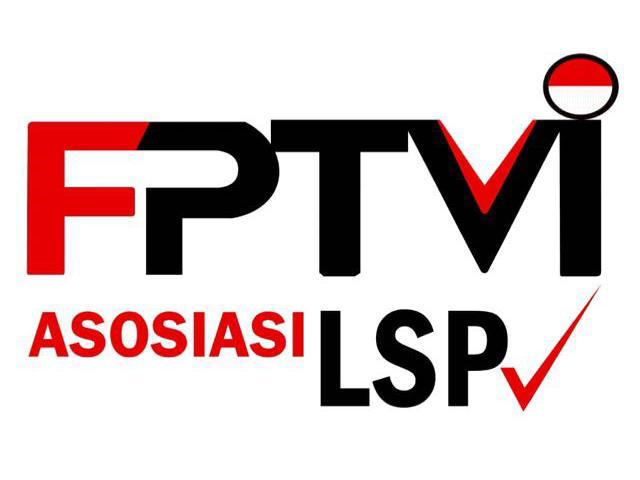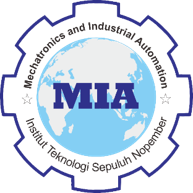Optimization of Bioethanol Production From Chlorella Vulgaris With Ca2+,Mg2+, and Zn2+ Ion Suplements Through Separated Hydrolysis and Fermentation Using Respon Surface Methodology
Abstract
Indonesia, with its wealth of natural resources, has the potential to develop bioethanol as an alternative to diminishing fossil energy sources. Third-generation bioethanol is a form of renewable energy and an environmentally friendly fuel derived from non-conventional biomass resources, particularly from microorganisms such as algae and cyanobacteria. This study focuses on optimizing the bioethanol production process from the microalga Chlorella vulgaris using the Separated Hydrolysis and Fermentation (SHF) method, with the addition of Ca2+, Mg2+, and Zn2+ ions to enhance bioethanol yield and concentration. The research procedure includes raw material pretreatment, acid hydrolysis, liquefaction, saccharification, fermentation, and distillation. The distillate samples are analyzed for bioethanol concentration using a refractometer and bioethanol density with a pycnometer. The effect of added medium components on the fermentation process is statistically analyzed using Analysis of Variance (ANOVA) in MINITAB Statistical Software and Response Surface Methodology (RSM) in DESIGN EXPERT 13. Statistical optimization of the fermentation process is performed using Central Composite Design (CCD). ANOVA analysis reveals significance with a P-Value <0.0001 for bioethanol yield and concentration. Optimization results indicate an optimal yield of 17.087% with a concentration of 165.592 g/L, achieved with the addition of Ca2+ at 164.755 ppm, Mg2+ at 146.279 ppm, and Zn2+ at 38.516 ppm.
Keywords
Full Text:
PDFReferences
N. Jeyakumar et al., “Experimental investigation on simultaneous production of bioethanol and biodiesel from macro-algae,” Fuel, vol. 329, p. 125362, Dec. 2022, doi: 10.1016/j.fuel.2022.125362.
M. V. Rodionova et al., “Biofuel production: Challenges and opportunities,” Int J Hydrogen Energy, vol. 42, no. 12, pp. 8450–8461, Mar. 2017, doi: 10.1016/j.ijhydene.2016.11.125.
S. Soeprijanto, L. Qomariyah, A. Hamzah, and S. Altway, “Bioconversion of Industrial Cassava Solid Waste (Onggok) to Bioethanol Using a Saccharification and Fermentation process,” International Journal of Renewable Energy Development, vol. 11, no. 2, pp. 357–363, May 2022, doi: 10.14710/ijred.2022.41332.
A. T. Hoang et al., “Catalyst-Based Synthesis of 2,5-Dimethylfuran from Carbohydrates as a Sustainable Biofuel Production Route,” ACS Sustain Chem Eng, vol. 10, no. 10, pp. 3079–3115, Mar. 2022, doi: 10.1021/acssuschemeng.1c06363.
P. Ranganathan, A. K. Pandey, R. Sirohi, A. Tuan Hoang, and S.-H. Kim, “Recent advances in computational fluid dynamics (CFD) modelling of photobioreactors: Design and applications,” Bioresour Technol, vol. 350, p. 126920, Apr. 2022, doi: 10.1016/j.biortech.2022.126920.
R. Maryana et al., “Bioethanol production process with SHF method from EFBs pulp and its microcrystalline,” IOP Conf Ser Earth Environ Sci, vol. 1108, no. 1, p. 012021, Nov. 2022, doi: 10.1088/1755-1315/1108/1/012021.
T. J. Tse, D. J. Wiens, and M. J. T. Reaney, “Production of Bioethanol—A Review of Factors Affecting Ethanol Yield,” Fermentation, vol. 7, no. 4, p. 268, Nov. 2021, doi: 10.3390/fermentation7040268.
T. Kandungan et al., “Pengaruh Penambahan Ion Mg 2+.”
E. Demiray, S. E. Karatay, and G. Dönmez, “Evaluation of pomegranate peel in ethanol production by Saccharomyces cerevisiae and Pichia stipitis,” Energy, vol. 159, pp. 988–994, Sep. 2018, doi: 10.1016/j.energy.2018.06.200.
O. K. Agwa, I. G. Nwosu, and G. O. Abu, “Bioethanol Production from <i>Chlorella vulgaris</i> Biomass Cultivated with Plantain (<i>Musa paradisiaca</i>) Peels Extract,” Advances in Bioscience and Biotechnology, vol. 08, no. 12, pp. 478–490, 2017, doi: 10.4236/abb.2017.812035.
E. Hawaz et al., “Bioethanol production from sugarcane molasses by co-fermentation of Saccharomyces cerevisiae isolate TA2 and Wickerhamomyces anomalus isolate HCJ2F-19,” Ann Microbiol, vol. 74, no. 1, p. 13, Apr. 2024, doi: 10.1186/s13213-024-01757-8.
F. M. Alminderej, Z. Hamden, Y. El-Ghoul, B. Hammami, S. M. Saleh, and H. Majdoub, “Impact of Calcium and Nitrogen Addition on Bioethanol Production by S. cerevisiae Fermentation from Date By-Products: Physicochemical Characterization and Technical Design,” Fermentation, vol. 8, no. 11, p. 583, Oct. 2022, doi: 10.3390/fermentation8110583.
A. Kevin Santoso, A. Livia Hidayat, A. Rexer Fransenda, A. Hasiholan Marpaung, and S. Glory Sihombing, “Optimizing Bioethanol Production through Separated Hydrolysis Fermentation of Rubber-Cassava (Manihot Glaziovii) Starch with K + and Mg 2+ Mineral Ion Supplements,” 2023. [Online]. Available: www.ijisrt.com
C. Wan et al., “The impact of zinc sulfate addition on the dynamic metabolic profiling of Saccharomyces cerevisiae subjected to long term acetic acid stress treatment and identification of key metabolites involved in the antioxidant effect of zinc,” Metallomics, vol. 7, no. 2, pp. 322–332, 2015, doi: 10.1039/C4MT00275J.
R. Barros de Souza, R. K. Silva, D. S. Ferreira, S. de Sá Leitão Paiva Junior, W. de Barros Pita, and M. A. de Morais Junior, “Magnesium ions in yeast: setting free the metabolism from glucose catabolite repression,” Metallomics, vol. 8, no. 11, pp. 1193–1203, 2016, doi: 10.1039/C6MT00157B.
D. Fiorentini, C. Cappadone, G. Farruggia, and C. Prata, “Magnesium: Biochemistry, Nutrition, Detection, and Social Impact of Diseases Linked to Its Deficiency,” Nutrients, vol. 13, no. 4, p. 1136, Mar. 2021, doi: 10.3390/nu13041136.
S. Chotineeranat, R. Wansuksri, K. Piyachomkwan, P. Chatakanonda, P. Weerathaworn, and K. Sriroth, “Effect of calcium ions on ethanol production from molasses by Saccharomyces cerevisiae,” Sugar Tech, vol. 12, no. 2, pp. 120–124, Jun. 2010, doi: 10.1007/s12355-010-0024-6.
J. R. Robinson, O. S. Isikhuemhen, and F. N. Anike, “Fungal–Metal Interactions: A Review of Toxicity and Homeostasis,” Journal of Fungi, vol. 7, no. 3, p. 225, Mar. 2021, doi: 10.3390/jof7030225.
Syaputri, F. Panca, and D. Salirawati, “PENGARUH ION LOGAM Zn2+ DALAM BENTUK SENYAWA ZnSO4 TERHADAP AKTIVITAS ENZIM α-AMILASE,” Jurnal Elemen Kimia, vol. 8, no. 1, pp. 1–7, 2024.
T. A. Mekuriaw and M. K. Abera, “CaO -catalyzed trans-esterification of brassica carinata seed oil for biodiesel production,” Heliyon, vol. 10, no. 13, p. e33790, Jul. 2024, doi: 10.1016/j.heliyon.2024.e33790.
S. Altınışık, F. U. Nigiz, S. Gürdal, K. Yılmaz, N. B. Tuncel, and S. Koyuncu, “Optimization of bioethanol production from sugar beet processing by-product molasses using response surface methodology,” Biomass Convers Biorefin, vol. 15, no. 7, pp. 9875–9888, Apr. 2025, doi: 10.1007/s13399-024-05786-w.
M. Pirsaheb et al., “Preparation of the activated carbon from India shrub wood and their application for methylene blue removal: modeling and optimization,” Desalination Water Treat, vol. 57, no. 13, pp. 5888–5902, Mar. 2016, doi: 10.1080/19443994.2015.1008581.
T. Tadesse, D. Dase, A. D. Koricha, and K. Bacha, “Optimization of Bioethanol Production Using Response Surface Methodology for Stress‐Tolerant Wild Yeasts Isolated from Natural Forests,” Int J Energy Res, vol. 2024, no. 1, Jan. 2024, doi: 10.1155/2024/7086047.
M. Yolmeh and S. M. Jafari, “Applications of Response Surface Methodology in the Food Industry Processes,” Food Bioproc Tech, vol. 10, no. 3, pp. 413–433, Mar. 2017, doi: 10.1007/s11947-016-1855-2.
L. M. S. Pereira, T. M. Milan, and D. R. Tapia-Blácido, “Using Response Surface Methodology (RSM) to optimize 2G bioethanol production: A review,” Biomass Bioenergy, vol. 151, p. 106166, Aug. 2021, doi: 10.1016/j.biombioe.2021.106166.
M. Sarah, I. Madinah, E. Misran, and Fatimah, “Optimization of microwave-assisted hydrolysis of glucose from oil palm empty fruit bunch,” S Afr J Chem Eng, vol. 51, pp. 1–14, Jan. 2025, doi: 10.1016/j.sajce.2024.10.004.
DOI: http://dx.doi.org/10.12962%2Fj23378557.v11i1.a22740
Refbacks
- There are currently no refbacks.
This work is licensed under a Creative Commons Attribution 4.0 International License. IPTEK The Journal of Engineering published by Pusat Publikasi Ilmiah, Institut Teknologi Sepuluh Nopember.
Please contact us for order or further information at: email: iptek.joe[at]gmail.com Fax/Telp: 031 5992945. Editorial Office Address: Pusat Riset Building 6th floor, ITS Campus, Sukolilo, Surabaya 60111, Indonesia.








